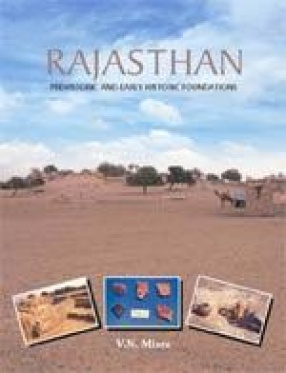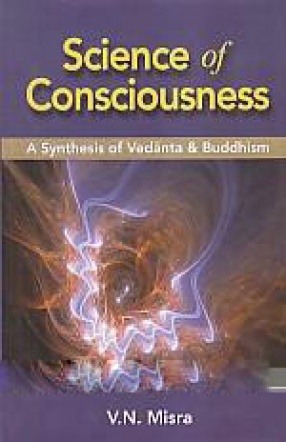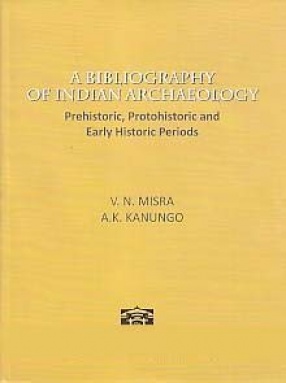The name, Rajasthan evokes many images, of Rajputs-tall, handsome men wearing colourful turbans, beautiful women, unmatched valour and chivalry, warn hospitality, reverence for life, impressive forts and palaces, varied wildlife, and rich traditions of music, song, and dance. The society of the State is composed of a large number of Hindu castes and several tribes, a few of which still live, at least, partially, a nomadic, hunting-gathering way of life. The present complex and culturally rich society is a product of adaptation to changing environment over a long period of time. Multidisciplinary research shows that the presently arid Thar desert enjoyed good rainfall and had a network of perennial rivers during the Pleistocene. Stone tool using nomadic hunting-gatherers had begun to colonize the region from about half-a-million years ago. Because of climatic change and shifting of drainage the land to the west of the Aravallis started turning into a sandy desert from about two lakh years ago. Sediments deposited by water and wind, their weathering through time and the presence of archaeological material tell us the story of the fluctuating climatic history and evolving cultures of the region. Around 7000 years ago Mesolithic hunter-gatherers had begun domestication of cattle, goats and sheep. Settled village life based on agriculture and copper and stone technology appeared in the Banas basin in Mewar from ca. 5000 years. In the eastern part of the state new agriculture-based villages using iron technology appeared around 3000 years ago, and towns, cities and political states from 4000 BC onwards. In the arid and semi-arid Western Rajasthan human groups continued to live by hunting-gathering until almost early medieval period except along the perennially flowing Saraswati (present-day dry Ghaggar) river where farming-based villages and towns belonging to the Indus/Harappan civilization appeared around 5000 years ago and were abandoned after 2000 BC due to the desiccation of the river. This book documents the long history of nomadic, hunting-gathering way of life during the stone age, emergence of agriculture-based villages during the Chalcolithic period and of towns and cities during the Bronze Age, expansion of settled life the emergence of new urban centres and political states after the advent of iron, incorporation of hunter-gatherers and foreign invaders into the Hindu caste system, and the survival of hunter-gatherers into the present that has produced the economically and culturally vibrant present society of Rajasthan.
Rajasthan: Prehistoric and Early Historic Foundations
by V.N. Misra
$174.60
$194.00
In stock
Free & Quick Delivery Worldwide
All orders amounting to US$ 50 or more qualify for Free Delivery Worldwide. For orders less than US$ 50, we offer Standard Delivery at $14 per book.
ABOUT THE AUTHOR V.N. Misra
Virendra Nath Misra got his M.A. degree in Anthropology from Lucknow Universityin 1957, and Ph.D. in Archaeology from Pune University in 1962, under the guidance of the eminent archaeologist, Prof. H.D. Sankalia. He has carried out extensive archaeological explorations in Rajasthan, M.P. and U.P., and has discovered more than a hundred archaeological sites. He has excavated Mesolithic sites of Bagor and Tilwara, several Palaeolithic sites near Didwana, and Chalcolithic and Early Historic site of Balathal in Rajasthan, Palaeolithic and Mesolithic rock-shelters at Bhimbetka,and Palaeolithic site of Samnapur in M.P. Misra’s studies of Quaternary deposits in western Rajasthan and excavations at Singi Talav and the fossil dune at 16R, Didwana, jointly with Prof. S.N. Rajaguru, have significantly contributed to understanding the evolution of environment and early human colonization of the Thar desert. His excavations at Balathal have thrown ample light on the lifeways Balathal have thrown ample light on the lifeways of the Chalcolithic farmers and early historic iron workers of Mewar. Misra has conducted ethnographic studies among the hunting-gathering communities of Bhils, Van Vagris, and Kalbeliyas in Rajasthan, Kanjars in U.P., and Pardhis and Kuchbandhias in M.P. He has supervised Ph.D. research of 25 students in different branches of archaeology, and has authored or edited, singly or jointly, 10 books, and over 120 research papers published in leading journals and edited volumes. Misra has been editor of Man and Environment, Journal of the Indian Society for Prehistoric and Quaternary Studies from its inception in 1977, and was co-editor of Eastern Anthropologist. Besides, he has been associated, as a member of the editorial advisory boards, with Journal of the S.C. Roy Institute, The Anthropologists, Journal of World Prehistory, L’ Anthropologie, the Holocene, The Asian Perspectives, and Geoarchaeology. Prof. Misra has been recipient of Pandit Jagpal Krishna Gold Medeal of Lucknow University; Homi Bhabha Fellowship; Leverhulme Visiting Fellowship at ANU, Canberra; Senior Fulbright Fellowship at UC, Berkeley; Corresponding Membership of IsMEO, Rome; Visiting Fellowships at Allahabad University and NEHU; National Fellowship of ICHR; Emeritus Fellowship of UGC; D.N. Majumdar Memorial Medal of Indian Social Science Association, and V.S. Wakankar Award of Indian Archaeological society. He has taught Anthropology at Lucknow University and Archaeology at Deccan College Post-Graduate & Research Institute (Deemed to be University), Pune. He was Director of the Deccan College from 1990 to 2000.
reviews
0 in total
Review by Anonymous
Be the first to review “Rajasthan: Prehistoric and Early Historic Foundations” Cancel reply
You must be logged in to post a review.
Bibliographic information
Title
Rajasthan: Prehistoric and Early Historic Foundations
Author
Edition
1st ed.
Publisher
ISBN
8173053219
Length
xxx+442p., Plates; Figures; Maps; Bibliography; 28cm.
Subjects
more by V.N. Misra see more
similar bookssee more
New Insights into the Glorious Heritage of Manipur (In 3 Volums)
To the peoples of ...
$200.70
$223.00
Before Vijayanagara: Prehistoric Landscapes and Politics in the Tungabhadra Basin
Before Vijayanagara : ...
$74.70
$83.00








There are no reviews yet.